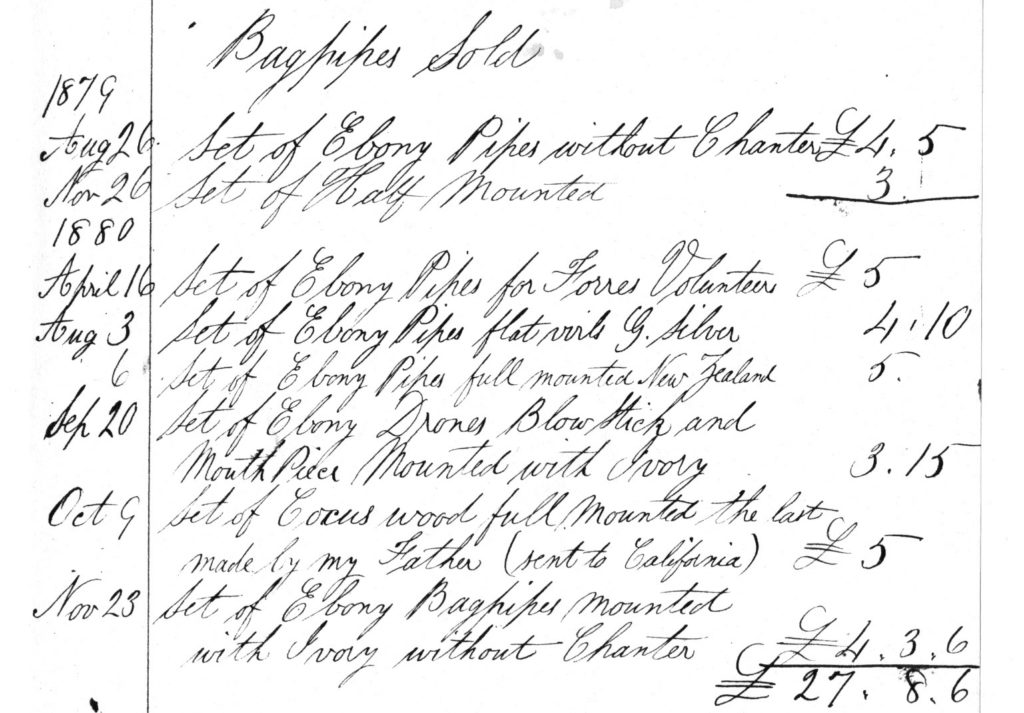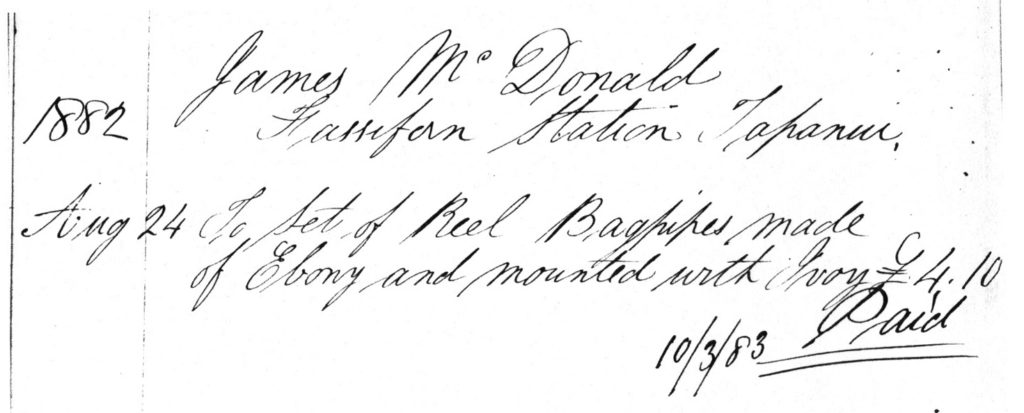 Some significant documents were missed from the Thow Bagpipemakers article yesterday. I have copies of Bills of Sale which make interesting reading. There are many of orders for ‘reel pipes’ for example. These were mouth blown half sets often used for playing at dances and for beginners.
Some significant documents were missed from the Thow Bagpipemakers article yesterday. I have copies of Bills of Sale which make interesting reading. There are many of orders for ‘reel pipes’ for example. These were mouth blown half sets often used for playing at dances and for beginners.
Fitted with a bellows they mirror almost exactly the lowland bagpipe as played by the town pipers of south Scotland. A lot of people confuse these pipes with the smallpipes but they are quite different in sound. The first having the pitch of the Highland pipe but with less volume, and the smallpipes having a much more domestic, soft indoor tone. They are much easier to play than the lowland pipes and hence much more popular.
Ebony pipes are much in evidence in Thow’s sales history and there are one or two orders for New Zealand. Given that this is the 1870s, they must have taken months to get there. There are many orders for Donald MacPhee’s tutor book, for reeds, drum heads and even the re-wrapping of fishing rods and cricket bats. For Queen’s Piper William Ross, himself a pipe maker, there is an order ‘Books £1’ to be sent to Crathie on Deeside.
Dundee Industrial School: ‘end of big drum 14/-. (fourteen shillings or about 75p today). To Piper Walter G. Duncan, Gordon Highlanders ‘To practising chanter – 7/6 and a set of ebony pipes ‘to be paid for in instalments. To P/M Meldrum ‘repairing chanter’. Also to P/M Meldrum then with the ‘3rd Sutherland Highlanders’ in Gibraltar (but with the account to be sent to Captain Croker, Pipe President) one joint of the small drone and blow stick and mouthpiece’.
I hope readers will find these examples interesting:


As we said yesterday, there is much more on the Thow Bagpipemaking firm (and many other pipeemakers) in Jeannie Campbell’s ‘Bagpipemakers’ book:
















Recent Comments